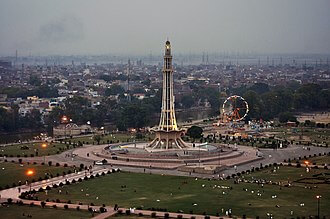Exploring the Mughal Majesty of Lahore: A Journey Through Time
Lahore, the artistic heart of Pakistan, is a megacity where the echoes of history reverberate through red sandstone walls and marble polls. frequently called the “ City of auditoriums, ” Lahore owes much of its majesty to the Mughal Empire — a dynasty that ruled the Indian key for over three centuries and left behind an architectural heritage unmatched in beauty and complication. Walking through Lahore moment is like stepping into a living gallery of Mughal art, armature, and spirit. Each monument tells a story — of emperors and crafters, of devotion and power, of dateless beauty sculpted in gravestone.
Badshahi Mosque The Crown Jewel of Mughal Devotion
No monument more captures the nobility of Mughal Lahore than the Badshahi Mosque. Commissioned by Emperor Aurangzeb in 1671, this synagogue stands as a symbol of Homeric muscle and spiritual majesty. erected entirely of red sandstone with delicate marble inlay, it’s one of the largest mosques in the world, able of accommodating over 55,000 worshippers.
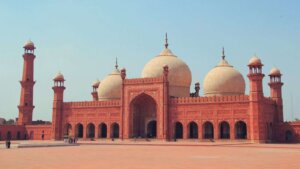
As one enters through its colossal gates, the sheer scale of the yard stirs admiration — a sense of space that humbles and uplifts at formerly. The polls, glazed in white marble, reflect the sky’s changing tinges, while intricate penmanship and flowery motifs tale of the crafters’ devotion to their craft.
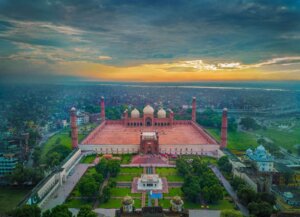
An intriguing yarn ties the synagogue to Lahore’s social history during British rule, it was used as a military garrison, its vast yard turned into a stable for nags. It was n’t until the 20th century that restoration work revived its original saintship. moment, as the call to prayer echoes from its minarets at evening, the synagogue stands as both a house of deification and a living testament to Mughal piety and abidance.
Lahore Fort The Royal Citadel
Conterminous to the Badshahi Mosque lies the Lahore Fort , or Shahi Qila, a UNESCO World Heritage Site that encapsulates the elaboration of Mughal aesthetics over generations. Though earlier performances of the stronghold was long before the Mughals, its current form took shape under Emperor Akbar in the 16th century and was latterly stretched by Jahangir, Shah Jahan, and Aurangzeb.
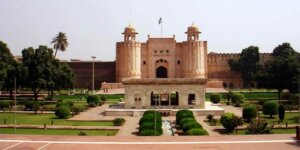
Each emperor left his mark then. Akbar’s donation reflects a mix of Islamic and Hindu architectural rudiments — a reflection of his policy of artistic integration. Shah Jahan, celebrated for his romantic sensibilities, added fineness and decoration the Sheesh Mahal, or Palace of Glasses, is his masterpiece within the stronghold. Step outside, and the walls glimmer with thousands of bitsy glass fractions that catch indeed the faintest light, creating an vision of a star- filled night sky.
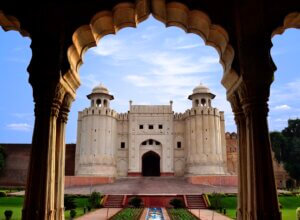
Legend has it that Shah Jahan erected this chamber for his cherished woman
, Mumtaz Mahal, so she could peer upon her reflection girdled by endless beauty — a lyrical gesture befitting an emperor known for erecting the Taj Mahal.
Shalimar Gardens Paradise on Earth
A short drive from the old megacity leads to the Shalimar Garden, commissioned by Shah Jahan in 1641 as a symbol of paradise on earth. Designed in the Persian Charbagh style — a quadrilateral theater divided by water channels the Shalimar auditoriums embody the Mughal love for harmony, water, and nature’s harmony.
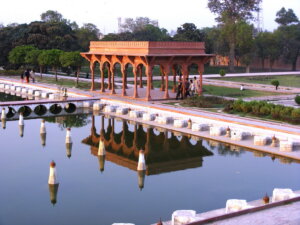
With three descending sundecks named Farah Bakhsh ( Bestower of Pleasure), Faiz Bakhsh ( Bestower of Goodness), and Hayat Bakhsh ( Bestower of Life), the auditoriums were formerly reserved for royal gatherings and moonlit soirées. The sound of flowing water from 410 cradles, combined with the scent of jasmine and roses, created a sensitive paradise.
Moment, families fun and games on its manicured meadows, and youthful couples tromp along the marble pathways — evidence that the Shalimar auditoriums remain a haven of peace and love indeed centuries latterly.
Tomb of Jahangir Resting Place of an Emperor
Across the River Ravi, in the serene exurb of Shahdara, stands the Tomb of Emperor Jahangir, one of Lahore’s most lyrical monuments. erected by his woman, Empress Nur Jahan, after his death in 1627, the grave reflects the emperor’s refined taste and his deep appreciation for nature and art.
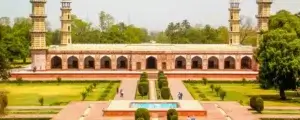
Unlike utmost Mughal sepultures, Jahangir’s does n’t feature a central pate. rather, it emphasizes intricate artificer — from delicate marble inlay to geometric mosaics ofsemi-precious monuments. The walls are adorned with verses from the Quran, while the auditoriums girding the grave echo the serenity Jahangir cherished during his continuance.
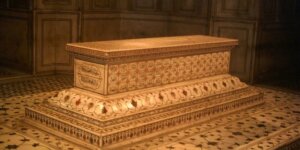
A fascinating legend tells that Jahangir’s grave faces north toward Kashmir — the land he loved most — a befitting homage to an emperor who formerly said, “ If there’s Paradise on Earth, it’s this, it’s this, it’s this. ”
A Living heritage
Lahore’s Mughal monuments are further than bones of a defunct conglomerate — they’re the soul of the megacity. These structures continue to inspire admiration not only for their architectural brilliance but also for the stories they hold of emperors who pictured in marble, of crafters who turned imagination into gravestone, and of a megacity that remains a ground between once and present.
To explore Lahore’s Mughal heritage is to trip through time — to walk where emperors once walked, to touch the walls that have witnessed centuries of devotion, love, and art. And as the evening light falls vocally over the polls and auditoriums , one realizes that the Mughals may have departed, but their spirit still breathes in every brick of Lahore.

